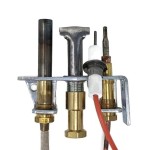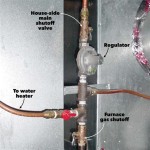How To Paint a Brick Fireplace Black
Painting a brick fireplace black can dramatically transform a room, offering a modern and sophisticated aesthetic. This relatively simple DIY project can be accomplished over a weekend with proper preparation and materials. The following details the steps involved in achieving a professional-looking, durable finish.
Before embarking on the painting process, a thorough assessment of the fireplace and surrounding area is necessary. Consider the existing décor and the desired final look. Black fireplaces can enhance a variety of styles, from minimalist to rustic chic. Also, one must consider the type of brick and its condition to choose the appropriate primer and paint.
Preparing the Fireplace for Painting
The success of any paint job hinges on proper preparation. This phase involves cleaning, repairing, and priming the brick to ensure optimal adhesion and a smooth, lasting finish. Skipping these steps can result in peeling, chipping, and an uneven appearance.
First, the surrounding area must be protected. Lay down drop cloths to cover the floor and any furniture that cannot be moved away from the fireplace. Secure the edges of the drop cloths with painter's tape to prevent them from shifting during the cleaning and painting processes. Careful protection is crucial to avoid unwanted paint splatters and damage.
Next, cleaning the brick is essential. Over time, brick fireplaces accumulate soot, dust, and grime. Use a stiff-bristled brush and a solution of trisodium phosphate (TSP) mixed with water, following the manufacturer's instructions for dilution. TSP is a powerful cleaner that effectively removes stubborn residues. Scrub the entire surface of the brick, paying close attention to the grout lines, which tend to trap dirt. After scrubbing, rinse the brick thoroughly with clean water to remove any remaining TSP residue. Allow the fireplace to dry completely before proceeding.
Once the brick is clean and dry, inspect it for any cracks or damaged areas. Use a masonry repair compound to fill any cracks or gaps. Follow the product's instructions for application and drying time. Ensure that the repair compound is completely dry and sanded smooth before moving on to the priming stage. This step is crucial for creating a uniform surface for painting.
Finally, apply a high-quality masonry primer. A primer is designed to adhere to the brick surface and creates a bond for the paint. Without primer, the paint may not adhere properly and can peel or flake over time. Use a brush to apply the primer, working it into the pores of the brick and grout lines. Allow the primer to dry completely according to the manufacturer's instructions. A second coat of primer may be necessary for porous brick.
Selecting the Right Paint and Tools
Choosing the correct paint and application tools is vital for achieving a professional and durable finish. The type of paint and tools used will directly impact the appearance and longevity of the painted fireplace. Consider the heat resistance, durability, and aesthetic qualities of different paint options.
For brick fireplaces, a high-heat acrylic latex paint is recommended. This type of paint is specifically formulated to withstand the high temperatures that fireplaces can generate. It also offers good durability and resistance to cracking and peeling. Choose a black paint with a matte or satin finish for a sophisticated look. Avoid using oil-based paints, as they can yellow and become brittle over time when exposed to heat. Ensure the paint is rated for temperatures exceeding what your fireplace typically reaches to prevent damage and ensure longevity.
In terms of application tools, a combination of paintbrushes and rollers is often necessary. Use a 2-3 inch angled brush for cutting in around the edges of the fireplace and for painting the grout lines. A small roller with a nap appropriate for textured surfaces (typically 3/8" to 1/2") is ideal for painting the flat surfaces of the brick. A paint tray is also essential for holding the paint and ensuring even application. Additionally, have a set of clean rags on hand for wiping up any drips or spills.
When selecting paintbrushes and rollers, choose high-quality options. Cheaper brushes and rollers can shed bristles or leave uneven textures on the painted surface. Investing in quality tools will yield better results and make the painting process more efficient.
Applying the Paint and Finishing Touches
With the fireplace properly prepared and the right materials selected, the final stage involves applying the paint and adding any necessary finishing touches. Patience and attention to detail are crucial during this phase to achieve a smooth, even, and professional-looking finish.
Begin by applying the first coat of black paint. Start by cutting in around the edges of the fireplace with the angled brush. Then, use the roller to paint the flat surfaces of the brick, working in small sections and ensuring even coverage. Pay close attention to the grout lines, ensuring that they are fully coated with paint. Avoid applying the paint too thickly, as this can lead to drips and an uneven finish.
Allow the first coat of paint to dry completely according to the manufacturer's instructions. This is a critical step; rushing the drying process can result in the second coat of paint peeling or cracking. Once the first coat is dry, inspect the fireplace for any areas that may require additional coverage. Apply a second coat of paint, using the same techniques as before. Again, avoid applying the paint too thickly. The goal is to achieve full and even coverage without compromising the texture of the brick.
After the second coat of paint has dried completely, carefully remove the painter's tape from around the edges of the fireplace. Use a utility knife to score the tape along the paint line before peeling it away. This will help prevent the paint from chipping or peeling along with tape. Inspect the finished fireplace for any imperfections or areas that may require touch-ups. Use a small brush to apply touch-up paint as needed.
Finally, allow the painted fireplace to cure for several days before using it. This will give the paint ample time to harden and develop its full heat resistance. Once the paint has cured, the updated brick fireplace is ready to be showcased.

Our Black Painted Fireplace Bright Green Door

Our Black Painted Fireplace Bright Green Door

Our Black Painted Fireplace Bright Green Door

Easy Weekend Fireplace Makeover Best Paint To Use Catholic Home

30 Gorgeous Painted Brick Fireplace Ideas

Painted Black Brick Fireplace Diy Inspired

Our Black Painted Fireplace Bright Green Door

The Pros Const Of Painted Brick

25 Painted Brick Fireplaces To Make A Statement Shelterness

Guide To Fireplace Painting Part 2 Colors And Techniques
Related Posts








